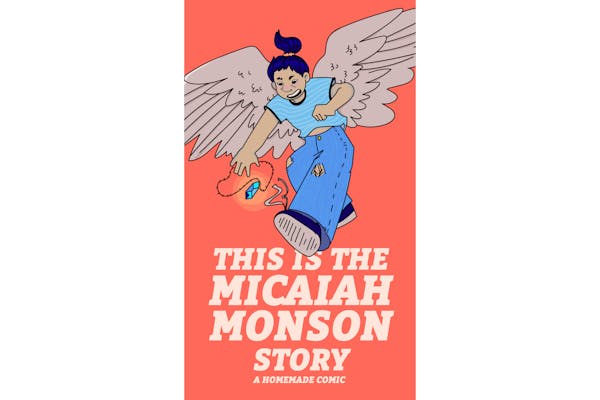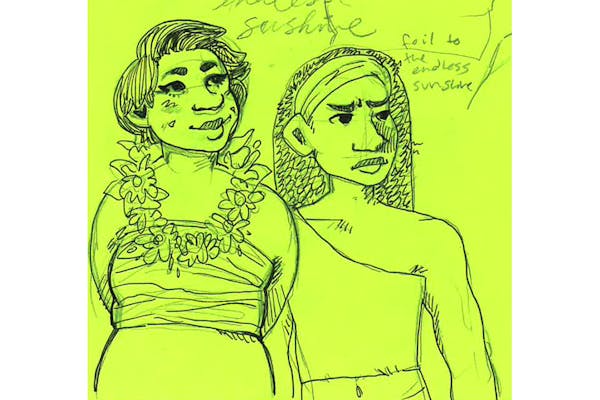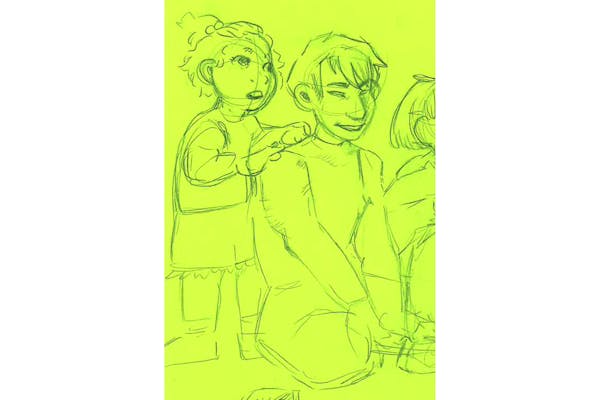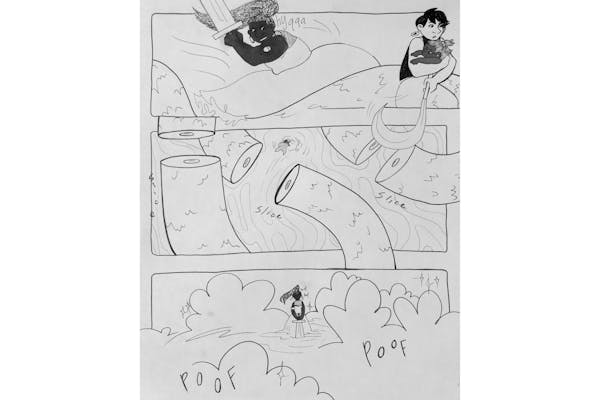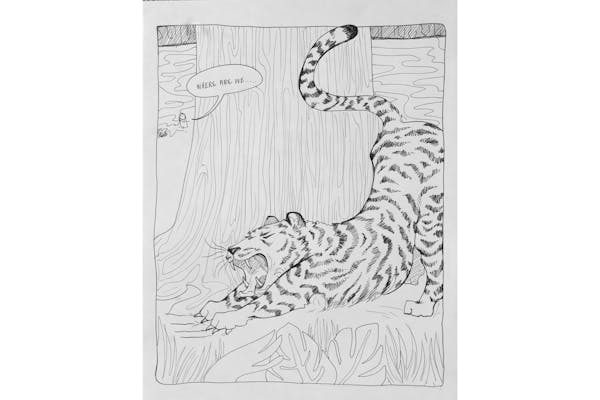Showing and Telling: Art Alumna Creates Illustrated Stories to Share Important Ideas
By Cherie Suonvieri '15, GS'21, content specialist
November 11, 2022 | 8:45 a.m.

Aimee Kuiper '22 graduated from Bethel last spring with degrees in art and digital humanities.
As a child, Aimee Kuiper ’22 spent several months preparing for a complex medical procedure. The thought of the procedure caused her stress—but she coped with her stress by illustrating. She drew charts and diagrams to explain to herself and others what the surgery would do and how it would help her. After finding that drawing could help her communicate important ideas, Kuiper began to dream of a career in art. Then she came to Bethel where she found professors and classmates who supported and helped her refine that dream.
Kuiper double majored in fine arts and digital humanities, and as much as she could, she focused on illustration, both physical and digital. Her professors gave her autonomy and independence, allowing her to pursue the projects she wanted. “I’m so grateful for my professors. They never put me in a box,” she says. “Instead, they let me incorporate my hopes for the future.”
Kuiper’s work tends to focus on communicating important ideas in a meaningful way. For her senior project, she wrote and illustrated a children’s book to explain and celebrate neurodiversity. Through the project, she gained clarity around her career aspirations. If she could choose any job, she wants to be an illustrator for children’s stories.
During the spring semester of her senior year, Kuiper was awarded a Creative Support for Individuals Grant, which funded the creation of her graphic novel, The Micaiah Monson Story. Over the span of summer 2022, Kuiper wrote, illustrated, and published the graphic novel, which is meant to promote positive diverse role models for preteen kids. The story is being released in chapters and is accessible online for free. Kuiper has also created a workbook to go along with the graphic novel that guides readers through the process of creating their own story.
Loading Gallery...
Kuiper’s inspiration for The Micaiah Monson Story started with how she felt she should operate in the church. Most of her stories begin with her; she considers questions like, “Where do I go in the world?” and “How do I interact with it?” As the story evolved, it grew to become about third culture kids. “The concept of third culture kids began in missionary families,” Kuiper explains. “It’s this idea that you grew up in one place and you’re surrounded by that culture, but your family is from a different culture. You don’t just participate in both cultures, but you also form a third cultural identity within those two.”
Over time, the concept of third culture has become more widely applicable. “If you’re a hearing child who grows up with deaf parents, you participate in both cultures—but you also create a third identity within those cultures,” Kuiper says. In The Micaiah Monson Story, the characters are different representations of how third culture can appear in a person’s life and how it shapes their interactions with the world. “That ties back into the original theme of how the church is supposed to be a super diverse place full of hugely different people—and it’s not a big deal, and it’s not weird, it’s just a very normal thing.”
Through her work, Kuiper strives to create concrete situational examples that readers can learn from. In the children’s book she made for her senior project, she intentionally included scripting, which is a practice that can be helpful to children with autism. “Scripting is essentially providing clear examples of how one person can interact with another,” she explains. In The Micaiah Monson Story, she created a scenario where one character assumes that another speaks Korean—but they don’t. "It’s a little awkward, but the characters model how the situation can be handled. When kids read it, they can think about their own lives and consider what they could say or do when they find themselves in similar situations.”
When Kuiper looks ahead, she isn’t certain what the future holds, but she has some ideas. At the end of the summer, she moved to upstate New York, and she plans to pursue a job in art community work or art teaching. But she’s open to whatever God has in store for her. “Whatever I end up doing for work, I view that as a direct way to glorify God,” she says. “Whether it’s huge or small, important or unimportant, everything I do is an opportunity to glorify God. So whatever God has me doing, it’s going to be great.”
Study art at Bethel.
In Bethel’s Department of Art and Design, you’ll grow your creativity in deep and meaningful ways. You’ll have access to numerous studio spaces and learn from experienced faculty, as you engage in the creative experimentation that will set you up for a purposeful career.
